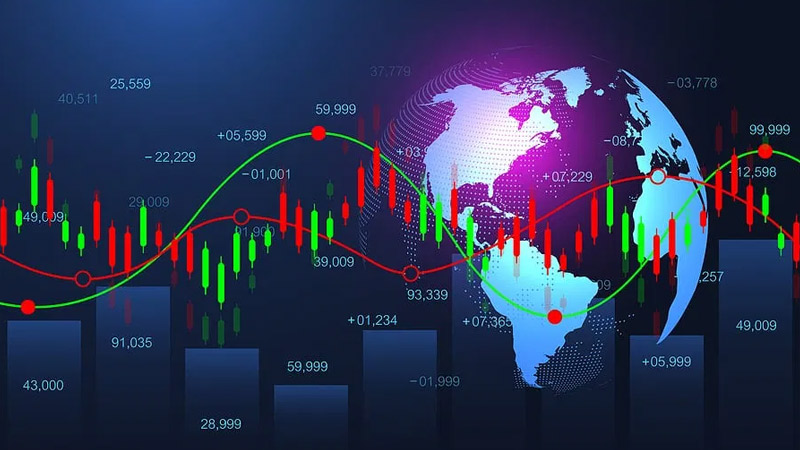Trading equity is a critical concept for any trader to understand. According to recent research, over $4 trillion is traded in the forex market on a daily basis.
Equity is the value of a trader’s account, including profits and losses from open positions. This is distinct from a trader’s balance which is the amount of money in the account prior to any trades being opened.
In order to properly manage risk and maximize profits, it is important for traders to understand the mechanics of equity.
This article will provide an overview of equity in trading, platform considerations, and risk management.
Key Takeaways
- Equity reflects the current state of a trader’s account, including profits and losses from open positions.
- Traders need to understand the mechanics of equity to manage risk and maximize profits.
- Monitoring equity and adjusting strategies accordingly is crucial for traders.
- Risk management, including the use of stop loss orders, diversification strategies, and controlling the amount of capital allocated to each trade, is essential for successful trading.
Definition and Mechanics
Equity in trading is the amount of money in a trader’s account, including profits or losses from open positions, and is distinct from the balance of the account.
Calculating equity takes into account the impact of open positions, as well as any dividends or other payments that are made to the account.
Equity is reflective of the current state of the trading account and can be a useful tool for traders to evaluate their financial position.
It is important to note that equity can change quickly, depending on the movement of the markets and the success or failure of trades.
As such, it is essential for traders to monitor their equity and adjust their strategies accordingly.
In addition, traders should be aware of the risks associated with trading and the potential for losses.
Platform Considerations
Location of equity on a trading platform may depend on whether MT4 or MT5 is used. For traders familiar with both systems, the differences are evident; MT4 is more suited to manual trading while MT5 has enhanced features for automated trading.
On MT4, the equity is displayed in the Terminal window under the Trade tab while on MT5, the equity can be seen in the Toolbox under the Trade tab.
Both platforms offer traders a variety of tools and features to help manage their trades, but the differences should be taken into consideration when deciding which platform is best for their trading style.
Traders should also keep in mind that the material does not provide investment advice or solicit transactions, and FXTM and its affiliates do not guarantee the accuracy, validity, timeliness, or completeness of information or data.
Risk Management
Risk management is a critical element of successful trading, and traders should be mindful of the extent of their exposure to loss. Stop loss orders are essential for limiting losses and helping traders stay disciplined. Diversification strategies can help traders manage risk by spreading it out over multiple instruments and markets.
| Risk Management | Importance | |||
|---|---|---|---|---|
| Stop Loss Orders | Essential for limiting losses and staying disciplined | |||
| Diversification | Spreading risk over multiple instruments and markets | Position Sizing | Managing the risk of each trade by controlling the amount of capital allocated |
Frequently Asked Questions
What is the minimum amount of money required to start trading?
The minimum amount of money required to start trading depends on the broker chosen. When selecting a brokerage, it is important to consider fees, trading platforms, and customer service.
Additionally, it is essential to practice risk management and use appropriate leverage. Different brokers have different requirements for opening a trading account, but most will require a minimum deposit of around $100-$250. Smaller accounts can be opened for as little as $50, but it is important to be aware of the risks involved in trading small amounts.
Ultimately, it’s up to the trader to decide the minimum amount they are comfortable trading with.
How much leverage can I use in trading?
Leverage is a tool used by traders to manage risk and increase potential gains. It allows traders to open larger positions than they would otherwise be able to with their own capital. However, this also increases the risk of loss.
Care must be taken to understand market volatility and to manage leverage accordingly. Leverage can be used in various degrees, from 1:1 to 1:1000, depending on the trader’s risk appetite.
It is important to remember that leverage magnifies both potential profits and losses, so it must be used with caution.
In conclusion, understanding leverage and managing risk is key to successful trading.
How do I calculate my equity?
Calculating equity in trading is an important part of allocating capital and diversifying a portfolio. Equity can be calculated by taking the total amount of money in the trading account and subtracting any open positions.
It is essential to understand the amount of equity in an account at all times in order to manage risk and make informed decisions. To calculate equity, a trader must take into consideration any potential losses from open positions and make sure to factor in any additional capital that may be added to the account.
This will help to ensure that the amount of capital allocated to each trade is appropriate and that the risk is spread out across a diverse portfolio.
What are the tax implications of trading?
Navigating the tax implications of trading can be a tricky task. It is important to understand the thresholds and capital gains that come with trading financial instruments.
According to the IRS, certain traders may be taxed on net capital gains at either ordinary income tax rates or a lower rate of 0%-15%. Additionally, traders may need to pay self-employment tax if their profits exceed a certain threshold.
To stay one step ahead, it is wise to stay up-to-date on the ever-changing regulations and consult a professional who can help you navigate the complexities of tax law. Doing so will allow you to operate with greater freedom and peace of mind.
Are there any strategies for reducing risk when trading?
Risk management and risk reduction are key considerations when trading.
Reducing risk can be achieved through several strategies, such as:
- Diversifying investments
- Monitoring the market
- Limiting exposure to certain trades
Position sizing is another strategy which involves using smaller trades to limit the amount of capital at risk.
Risk management tools, such as stop-loss orders and trailing stops, can also be used to minimise losses.
Additionally, traders can reduce risk by:
- Using a trading plan
- Setting realistic goals
- Avoiding overtrading
These strategies can help traders to minimise losses and maximise their trading potential.
Conclusion
Understanding Equity in Trading
It is important to understand equity in trading in order to manage risk and maximize profits.
Equity is a key concept in forex and CFD trading, and is distinct from a trader’s balance. Platforms such as MT4 and MT5 allow traders to track their equity balance.
Additionally, risk management is essential to successful trading and traders should never risk more than they are able to lose.
Interestingly, according to the Bank of International Settlements, the forex market is the largest financial market in the world, with average daily turnover estimated to be over 5 trillion dollars in April 2019.











